Solar Powered Fairy Lights for Outdoor Magic
Understanding Solar Powered Fairy Lights
Solar powered fairy lights are eco-friendly, versatile lighting solutions that use sunlight to power delicate LED strands, creating a magical glow for outdoor spaces. Ideal for travelers, campers, and outdoor enthusiasts, these lights illuminate gardens, campsites, or patios without relying on traditional electricity. By harnessing solar energy, solar powered fairy lights offer a sustainable, cost-effective way to enhance ambiance during evening adventures or festive gatherings. This guide explores their applications, components, usage tips, and maintenance to help you make the most of these charming lights on your travels.
-1-1-1024x400.webp)
Common Application Scenarios for Solar Powered Fairy Lights
Solar powered fairy lights are incredibly versatile, making them a go-to choice for various outdoor settings. Their portability, ease of use, and eco-friendly design make them perfect for travelers and nature lovers. Here are the primary scenarios where these lights shine:
- Garden and Patio Enhancement: Wrapping solar powered fairy lights around trees, fences, or pergolas transforms backyards into cozy, inviting spaces for evening relaxation or social gatherings.
- Camping and Outdoor Adventures: Lightweight and packable, these lights illuminate tents, campsites, or trails, providing both safety and a warm ambiance for nighttime exploration.
- Festive and Event Decor: From weddings to outdoor parties, solar powered fairy lights add a whimsical touch when draped over tables, gazebos, or pathways, creating a festive atmosphere.
- Off-Grid Locations: In remote settings like cabins or beachside retreats, these lights offer reliable illumination without power outlets, ideal for eco-conscious travelers.
- Seasonal Decorations: Popular for holidays, solar powered fairy lights adorn Christmas trees, balconies, or porches, offering a sustainable alternative to traditional lighting.
Their adaptability makes solar powered fairy lights an essential companion for creating memorable outdoor experiences.
Core Components of Solar Powered Fairy Lights
Characteristics of the Fairy Light Strand
The light strand is the visual centerpiece of solar powered fairy lights, defining their aesthetic and durability:
- LED Bulbs: Energy-efficient LEDs are used in most solar powered fairy lights, available in warm white, cool white, or multicolored options. Shapes vary from classic bulbs to stars or lanterns, consuming minimal power to maximize battery life.
- Wire Material: Strands are typically made of flexible copper or PVC-coated wire, allowing easy wrapping around objects. Copper wires are durable and blend seamlessly into natural settings, perfect for outdoor use.
- Length and Bulb Density: Strands range from 10 to 100 feet with 50 to 500+ bulbs. Longer, denser strands create a brighter glow, ideal for larger spaces like patios or event venues.
- Weather Resistance: High-quality solar powered fairy lights feature IP65 or higher waterproof ratings, ensuring resilience against rain, snow, or humidity, which is crucial for travelers in diverse climates.
Selecting a strand with the right length, color, and durability ensures solar powered fairy lights meet your specific travel or decor needs.
Functionality of the Solar Component
The solar component powers solar powered fairy lights, making them sustainable and practical:
- Solar Panel: A compact photovoltaic panel converts sunlight into electricity. Monocrystalline panels offer higher efficiency, especially in low-light conditions, ensuring reliable charging.
- Rechargeable Battery: Typically NiMH (600-1200 mAh) or Li-ion (800-2000 mAh), the battery stores energy for 6-12 hours of nighttime illumination, depending on capacity and usage.
- Charge Controller: This prevents overcharging or deep discharging, protecting the battery and extending its lifespan, which is critical for long-term use in remote locations.
- Light Sensor: Many solar powered fairy lights include a dusk-to-dawn sensor, automatically activating at night and turning off during the day, simplifying operation for travelers.
These components work together to deliver eco-friendly, reliable lighting for any outdoor adventure.
Key Usage Tips for Solar Powered Fairy Lights
Choosing the Right Installation Location
Proper placement of solar powered fairy lights enhances both performance and visual appeal:
- Maximize Sunlight Exposure: Place the solar panel in a location with at least 6-8 hours of direct sunlight daily. Avoid shaded areas under trees or structures to ensure efficient charging.
- Optimize Panel Angle: Tilt the panel toward the sun (south-facing in the Northern Hemisphere) to capture maximum sunlight. Adjustable mounts can help maintain optimal positioning.
- Strategic Light Placement: Drape solar powered fairy lights around trees, railings, or tents for a magical effect. Avoid overstretching or tangling the wire to prevent damage.
- Ensure Safety: Secure the panel and strand to avoid tripping hazards or displacement in windy conditions, especially during outdoor events or camping.
Thoughtful placement ensures solar powered fairy lights shine brightly and safely throughout your travels.
Optimizing Battery Life and Performance
To keep solar powered fairy lights glowing reliably, follow these optimization tips:
- Initial Full Charge: Before first use, charge the lights in direct sunlight for 24-48 hours to condition the battery for maximum performance.
- Adjust for Seasons: In winter or cloudy regions, angle the solar panel to capture low-angle sunlight or choose models with higher-capacity batteries for extended runtime.
- Select Lighting Modes: Many solar powered fairy lights offer steady, flashing, or fading modes. Use steady mode for consistent lighting or flashing mode to conserve battery during long events.
- Conserve Energy: In low-sunlight areas, manually turn off the lights during extended cloudy periods to preserve battery charge, ensuring longevity for your trip.
These strategies help solar powered fairy lights perform reliably in diverse conditions.

Daily Maintenance and Simple Troubleshooting
Routine Maintenance Tips
Regular care ensures solar powered fairy lights remain vibrant and functional:
- Clean the Solar Panel: Dust or debris can reduce charging efficiency. Wipe the panel monthly with a soft, damp cloth to maintain optimal sunlight absorption.
- Inspect the Strand: Check for frayed wires, loose bulbs, or water damage, especially after storms. Replace damaged sections to prevent short circuits or reduced performance.
- Proper Storage: Store solar powered fairy lights in a cool, dry place when not in use to avoid battery degradation. Remove the battery for long-term storage to prevent leakage.
- Battery Care: For NiMH batteries, fully discharge and recharge every few months to avoid memory effect. Li-ion batteries should be stored at 50% charge to maintain health.
Consistent maintenance keeps solar powered fairy lights ready for your next adventure.
Handling Common Issues
Simple troubleshooting can resolve most issues with solar powered fairy lights:
- Lights Not Illuminating: If the lights don’t turn on, verify the solar panel has received sufficient sunlight. Check battery connections or replace the battery if it’s over 1-2 years old.
- Dim or Flickering Lights: This often indicates low battery charge. Place the panel in direct sunlight for a full day. If the issue persists, inspect LEDs for damage or wear.
- Short Runtime: If the lights turn off early, the battery may be undercharged or nearing its lifespan. Upgrade to a higher-capacity battery or reduce usage time in low-sunlight areas.
- Water Damage: After heavy rain, dry the components thoroughly and check for corrosion. Opt for IP65-rated solar powered fairy lights for humid or rainy destinations.
Carrying a spare battery or repair kit ensures solar powered fairy lights remain functional in remote settings.

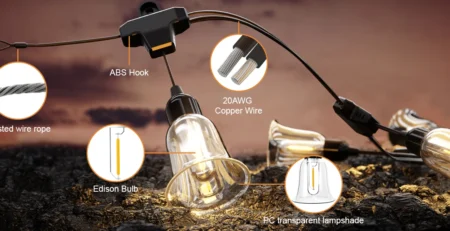
-4-2-450x231.webp)


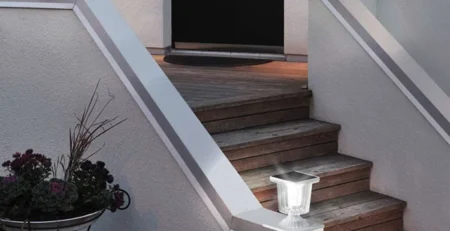
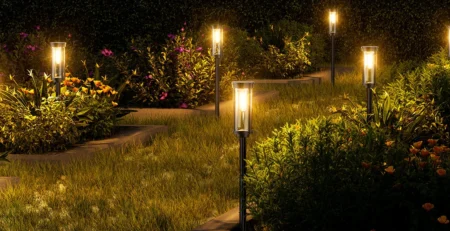
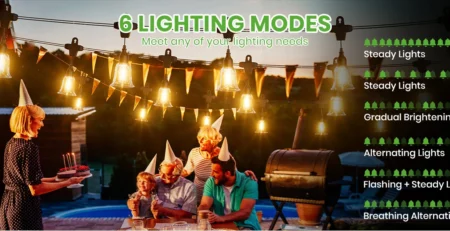

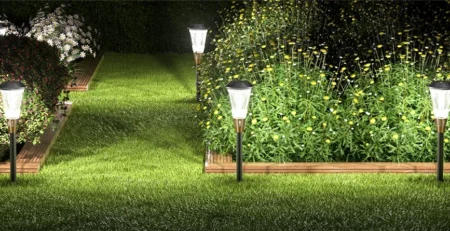
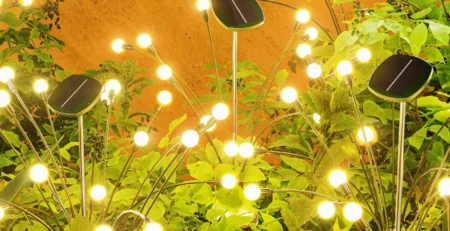
Leave a Reply